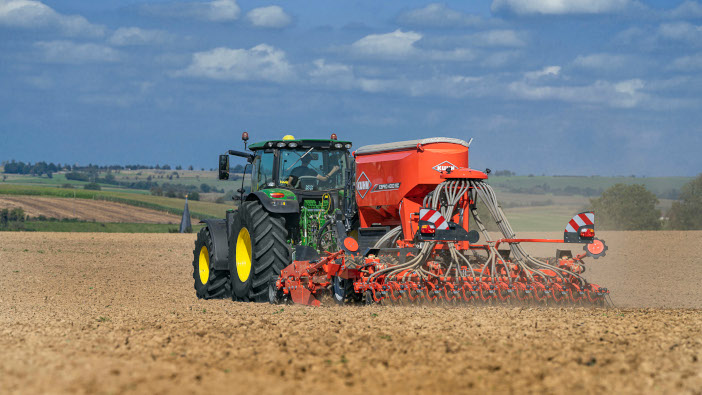Procam suggests FieldSense is an easier entry into precision farming and data evaluation. Procam customers can subscribe a field or two or the entire farm, depending on their stance on digital agronomy, enterprise type or farming system, or sign up to a single area of functionality, such as variable rate nutrition only.
The app-based functions include most of the features found on other platforms such as field performance evaluation, weather data, variable rate prescription plans, field reports and scouting tools. This first phase launch focuses on grid-based soil sampling, variable rate seed and nutrition and yield mapping with combinable crops.
Where Procam claims FieldSense differs from other systems is that is designed with agronomy at its core. “This isn’t another data collection exercise,” said MD Alex Collingwood. “It’s an agronomy tool to enhance the partnership between Procam agronomist and customer to inform decision making.”
To demonstrate its ‘precision in partnership’ strapline the company highlighted work with Procam customers who have trialled the platform.
The first used FieldSense field performance maps to collate historical biomass captured over several seasons. Regional technical manager Harry James explained that these maps are based on overlaying multiple data layers drawn from several seasons and stitched together to form a single visual.
“Rather than prescribing to the crop based on algorithms that predict how it will grow, we’re crop sensing to understand better how it grows, allowing us to augment this to improve field performance.”
Seed rates were adjusted to reflect historical biomass, in six rates ranging from 127 kg/ha to 227. When tiller counts were made in February, it revealed tiller numbers of between 1250 and 1360/ha.
So pleased was the triallist with the results that the decision was made to apply nitrogen variably too. By the time the Planetscope satellite flew over on May 21st the NDVI image showed almost uniform green throughout. “The data is important but the NDVI image isn’t going to calculate the amount of nitrogen. It’s further insight that can be ground-truthed and benchmarked, illustrating that data needs to be combined with grower and agronomist farm knowledge,” he added.
FieldSense used two satellite service providers, Planetscope and Sentinel2, using a 3m or 10m grids respectively.
Another example Procam presented was the use of FieldSense for OSR canopy evaluation.
Here, the aim is to use variable rate N to produce the optimum green area index (GAI) over the whole field. Farm-testing in oilseed rape where GAI in March was found to vary from a near optimum of 3.0 to just 1.0, showed that by varying N dose between 60 to 90 kg/ha, crop uniformity was corrected by early June.
The benefit went beyond better crop performance, margin and reduced farm footprint. “By balancing the crop up it allowed for a single sclerotinia spray to be applied,” added colleague Nigel Scott.
SFI consideration
The company believes the platform’s entry point to precision farming, and the SFI PRF1 action payment worth £27/ha, will help those considering this route.
Procam sees the SFI payment as a possible incentive for farmers to invest in the machinery needed to deliver precision farming strategies. Nigel pointed out this is changing all the time. “A barrier is often capital expenditure but we’re seeing precision tools adapted to suit smaller machines, and there is an increasing array of retrofit options. This, along with the SFI payment, is likely to encourage growers to look at precision strategies. FieldSense offers an ease of entry point allowing growers to dip their toes in the water.”
For those taking up the SFI offer, the platform can be used to create work plans from the variable rate files for audit compliance.


